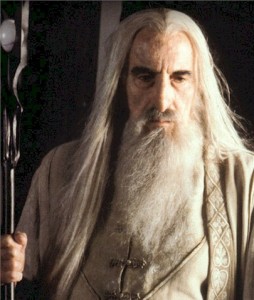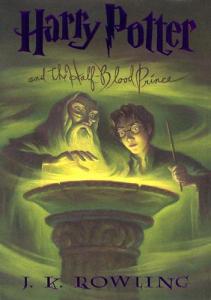Harry Potter and the Half-Blood Prince should have been called Harry Potter and You-Know-Who because the primary plot gives Harry – and the readers – a glimpse into Voldemort’s backstory. Dumbledore schedules private lessons in which he uses the Pensieve to show Harry memories from key moments in Voldemort’s life.
Up to this point, the Harry Potter series had primarily presented Voldemort as an ominous threat. Other wizards so fear him that they dare not speak his name. For the first time, Half-Blood Prince shows Voldemort as an actual character. However, this doesn’t necessarily humanize him. On the contrary, it demonstrates a different facet of Voldemort’s inhumane evil.
There’s a dilemma for any writer who wants to create a strong villain. On the one hand, the villain must present a worthy threat for the hero. A good story requires the hero to overcome obstacles to defeat the villain. This means the villain must be – or at least appear to be – smarter and/or more powerful than the hero. The most intimidating villains can inspire fear just through their reputations. Mystery helps to build such reputations; villains – like real-world dictators – seek to control and manipulate personal information. Villains want other characters to talk about their strengths in order to distract them from their weaknesses (learning about a villain’s high school love poems would probably reduce the intimidation factor).
On the other hand, smart writers recognize that evil has a pathetic side as well. Both in real life and in fantasy, evil actions suggests a lack of maturation and moral development. In doing research for The Man in the High Castle, Philip K. Dick was taken aback by the lack of empathy a Nazi official showed in his private diary when describing Jews. People who pursue morally questionable choices often do so because they cannot or will not form healthy human connections to friends and family. They pursue greater wealth or power because they cannot find happiness. Their lives are defined by deficiency rather than by contentment.
Better authors find a way to explore both facets of evil. In The Lord of the Rings, Tolkien created two villains – Sauron and Saruman – to embody different aspects of evil.* The two are clearly linked, not only by the similarity of their names, but also by their desire for the One Ring and world domination. Yet, throughout the books, readers learn little about Sauron, other than that he is a godlike being who commands vast armies. The narrative never provides the Hobbits with a Sauron “origin story” (although The Silmarillion reveals more); indeed, we never actually see Sauron firsthand in the novel. The heroes do not even attempt to fight him directly and instead rely upon subterfuge. Sauron appears intimidating and unbeatable right until his final defeat in Return of the King.

By contrast, readers learn much about Saruman’s history and his personality. We see Saruman directly several times. Each time, he is defanged by the protagonists. In The Two Towers, King Théoden resists Saruman’s entreaties and Gandalf breaks his staff. At the end of The Return of the King, Saruman chooses to enact petty revenge against the Hobbits by wrecking havoc upon the Shire. The man who sought to rule Middle-earth is reduced to bullying little people. Ultimately, Frodo takes pity on Saruman and refuses to kill him. In a backstory Tolkien wrote (published in Unfinished Tales), Saruman appears even more pitiable and consumed by jealousy of Gandalf.
In Half-Blood Prince, J.K. Rowling combines intimidating and pathetic into Voldemort, as if Sauron and Saruman were a single character. It’s tricky because those two character traits work against each other. Before Half-Blood Prince, Voldemort was so successful at managing his reputation that few wizards even dared to speak his name aloud. Only a handful of wizards realize that in his youth Voldemort was Tom Riddle, and only Dumbledore seems to have pieced together his backstory. We only saw Voldemort a few times, and whenever he appeared somebody usually died. In Goblet of Fire, he demonstrates his casual disregard for life by telling Peter Pettigrew to “kill the spare” [Cedric Diggory].
After Half-Blood Prince, readers learn that Tom Riddle’s hatred of muggles all comes down to daddy issues. Riddle’s mother tricked his muggle father into loving her, only to leave her when the spell wore off. Riddle’s mother died after childbirth, leaving young Tom in an orphanage. The book strips away the cool, cruel image that Voldemort created for himself and reveals him to be deeply insecure and emotional. With the veil of mystery lifted, Voldemort becomes less scary and more pathetic. In fact, if the young Tom Riddle weren’t such a creep, I suspect many readers would have felt bad for him.
But readers don’t get to feel sympathetic for Voldemort because the backstory never actually “humanizes” the character. In my review of Chamber of Secrets, I claimed that Voldemort was inherently evil, and nothing in his backstory changes my assessment. There’s no tragedy about Tom Riddle, no sense of missed opportunities, no possibility of redemption. We never get the sense that Voldemort had good in him, or that he might have turned from evil had his mom and dad loved him. When Dumbledore first meets Tom in the orphanage, he already bullies other kids and steals from them.
Ultimately, Half-Blood Prince manages to leave Voldemort’s evilness intact even after removing some of the mystery; it’s just a different type of evil. It’s a good balance that makes Voldemort just enough of a threat for Deathly Hallows. Voldemort is still scary, but he’s also a loser. Unfortunately, Voldemort is still a very one-dimensional character, inherently evil. I think it might have been more interesting had Rowling given him a few positive virtues.** That said, even if Voldemort doesn’t rank amongst my favorite villains, I give Rowling a lot of credit for exploring different facets of evil.
Next week, I review Harry Potter and the Deathly Hallows, the final book in the Harry Potter series…
* Star Wars does something similar by setting Emperor Palpatine as the insidious threat and Darth Vader as the fallen Jedi with anger management issues.
** After finishing Deathly Hallows, I found myself wishing that Gellert Grindelwald, the charismatic dark wizard who had befriended Dumbledore and claimed to fight “for the greater good,” had been the primary antagonist in the Harry Potter series rather than Voldemort.


I was near outraged in the beginning, but I think I can respect your point of view. Interesting…Well done! : )
LikeLiked by 1 person
Thanks for your comment, glad you made it to the end of the post 🙂 I didn’t mean that beginning paragraph to be snarky, but I’ve always been puzzled by the title. Snape doesn’t play a huge role in this book. We don’t even get THE reveal until book 7. I think thematically Snape’s pride in his magic heritage does tie into Voldemort’s bigotry, but really the book is more about deconstructing evil. This is most obvious for Voldemort, but also for Malfoy, whom we learn is at best a reluctant Death Eater and is actually the one who gets beaten up by Harry.
LikeLiked by 1 person
I didn’t take it snarky. I will just defend Rowling to the grave. LOL. You have valid points.
LikeLiked by 1 person